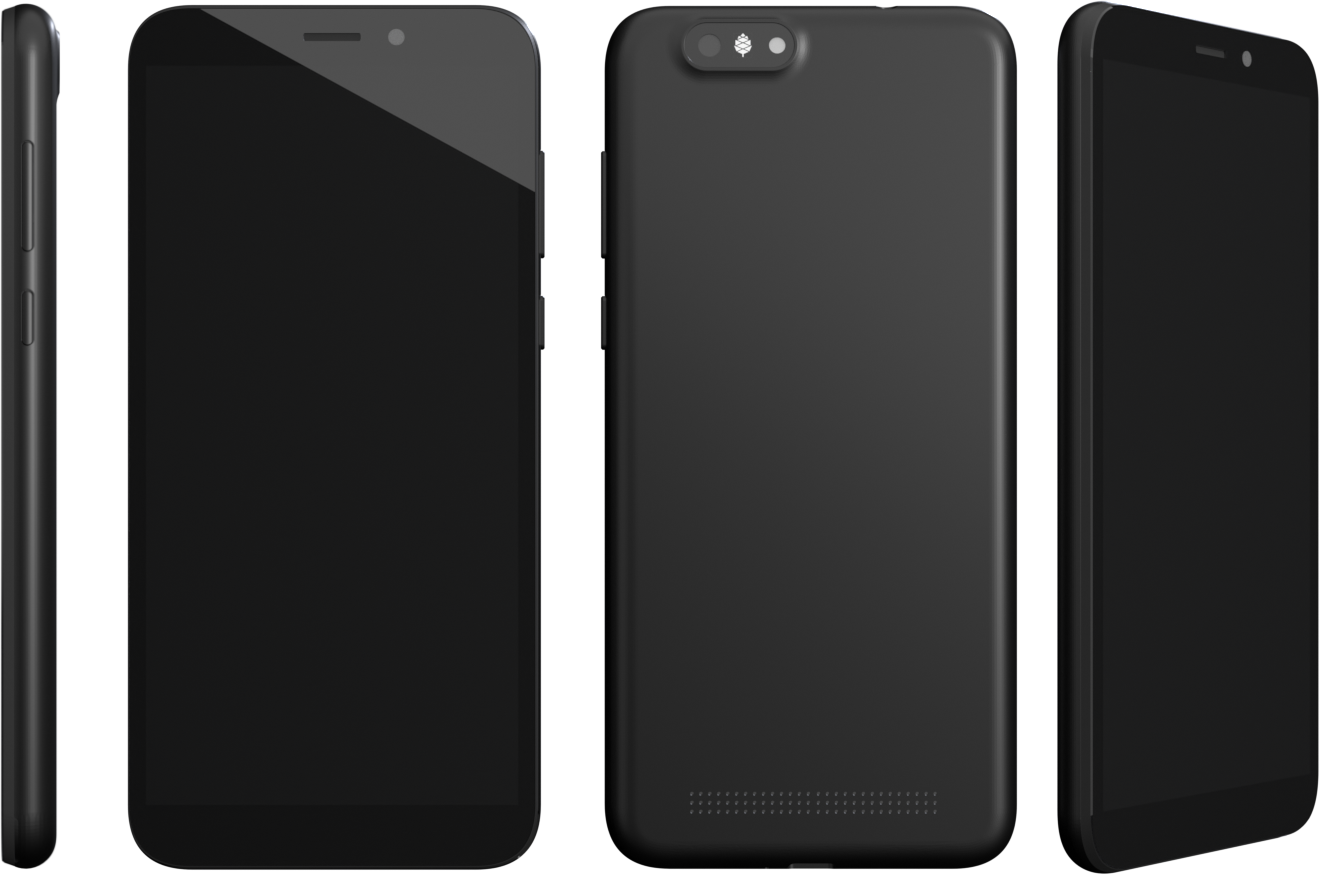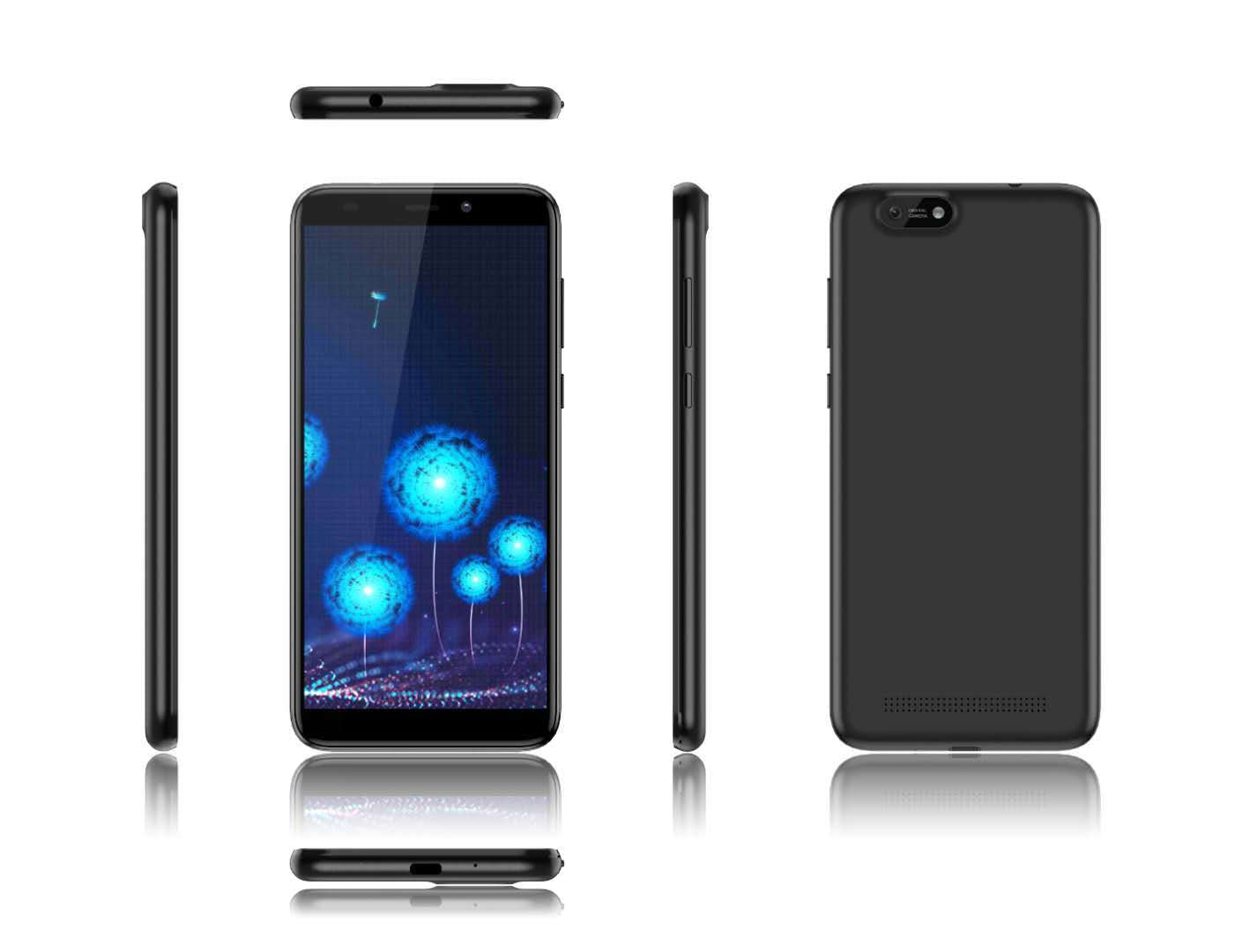PinePhone Privacy Smartphone
PinePhone Privacy Smartphone
Out of Stock!
Couldn't load pickup availability
Description ▼
Like new unit has been opened only to test, all contents are included and brand new.
Used unit has been tested to boot to the OS, it includes USB-A to USB-C Cable and SIM Holder, battery has been charged, unit might have scratches and signs of use, sales for these units are final.
This phone is not ready for mass market adoption, or to be used as a "daily driver" phone. This is a Linux enthusiast phone for those who are willing to work around shortcomings and obstacles while waiting (or helping) the software reach a more mature level.
An Open Source Smart Phone Supported by All Major Linux Phone Projects
Perhaps you’re in a line of work where security is a must, or a hard-core Linux enthusiast, or perhaps you’ve just had enough of Android and iOS and you’re ready for something else – the PinePhone may be the next phone for you. Powered by the same Quad-Core ARM Cortex A53 64-Bit SOC used in our popular PINE A64 Single Board Computer, the PinePhone runs mainline Linux and other operating systems.
The purpose of the PinePhone isn’t only to deliver a functioning Linux phone to end-users, but also to actively create a market for such a device, as well as to support existing and well established Linux-on-Phone projects. All major Linux phone-oriented projects, as well as other FOSS OS distros, are represented on the PinePhone and developers work together on our platform to bring support to this community-driven device.
Want to convert to an open-source, privacy-centric and community-supported Linux smartphone? Sounds like a daydream doesn't it? Well the Pine64 community has brought the dream to life with the PinePhone Linux Smartphone. Running mainline Linux and powered by an Allwinner A64 ARM Cortex-A53 quad-core processor, this phone provides an alternative to Android and iOS. Featuring a 1440x720p IPS display, the PinePhone looks just like a modern smartphone, and with 2 or 3GB of LPDDR3 RAM, a 16GB or 32GB eMMC module, 802.11n WiFi and Bluetooth 4.0, and 4G LTE Cat 4 worldwide band support, it will perform like one too. It has more expandability and connectivity than most other smartphones, including a headphone jack, microSD slot, 2Mpx front and 5Mpx rear cameras, GPS, a gyroscopic sensor and light sensor. In addition, the PinePhone has many options not included in most any other smartphone, like a pogo-pin I2C interface and privacy switches to turn off certain hardware features. For those wishing for their own Linux smartphone, the dream is here now!
KEY FEATURES
- Allwinner A64 Quad Core SoC with Mali 400 MP2 GPU
- 2GB or 3GB of LPDDR3 RAM
- 5.95″ LCD 1440×720, 18:9 aspect ratio (hardened glass)
- Bootable Micro SD
- 16GB or 32GB eMMC
- HD Digital Video Out
- USB Type C (Power, Data and Video Out)
- Quectel EG-25G with worldwide bands
- WiFi: 802.11 b/g/n, single-band, hotspot capable
- Bluetooth: 4.0, A2DP
- GNSS: GPS, GPS-A, GLONASS
- Vibration motor
- RGB status LED
- Selfie and Main camera (2/5Mpx respectively)
- Main Camera: Single OV6540, 5MP, 1/4″, LED Flash
- Selfie Camera: Single GC2035, 2MP, f/2.8, 1/5″
- Sensors: accelerator, gyro, proximity, compass, ambient light
- 3 External Switches: up down and power
- HW-disable switches: LTE/GNSS, WiFi, Microphone, Speaker, Cameras
- Samsung J7 form-factor 3000mAh battery
- Case is matte black finished plastic
- Headphone Jack
NOTES
- Currently shipping from Kentucky.
- This phone is not ready for mass market adoption, or to be used as a "daily driver" phone. This is a Linux enthusiast phone for those who are willing to work around shortcomings and obstacles while waiting (or helping) the software reach a more mature level.
- A small numbers of stuck or dead pixels (1-3) can be a characteristic of LCD screens. While rare, this should not be considered a defect. If you think that a minor dissatisfaction, such as dead pixels will prompt you to be dissatisfied, DO NOT purchase the PinePhone. When fulfilling your purchase, please bear in mind that we are offering the PinePhone as a community service. Thank you.
- * Different community editions are released from time to time - we do our best to specify the edition we expect to receive, but this is subject to change. However, it is always possible to boot the PinePhone with a microSD card, and reflash the internal eMMC if desired.
- Art on the back of the case varies based on the community edition that comes preloaded on the phone at the time of shipping.
- The convergence package (3GB / 32GB) features a Beta Edition PinePhone with a more RAM memory (3GB LPDDR3) and eMMC storage (32GB) as well as a compatible USB-C docking bar capable of charging, digital video output, dual USB 2.0 type-A host ports for peripherals (such as keyboard and mouse) and fast Ethernet.
LINKS
- Pinephone Wiki - https://wiki.pine64.org/wiki/PinePhone
- Supported Cellular Carriers - https://wiki.pine64.org/wiki/PinePhone_Carrier_Support
- ameriDroid Learn - https://ameridroid.com/blogs/ameriblogs/tagged/pinephone
Warranty is valid for thirty days, starting upon date of receipt.
VIDEOS
Recommended Accessories ▼
Bundle Deals▼
Let’s Connect! We’re a small business passionate about helping you achieve your goals of comfort, privacy, and security with Home Assistant, Single Board Computers, and more. Get in touch for a free consultation or just a fun chat about what’s possible—we’ll do our best to guide you in the right direction and get you the best deal! As a small team, we’ll strive to be available or get back to you as soon as possible.
Share
SKU:G0307-KY
View full details




amerIDroid.com New Theme
We have received some feedback and released a new theme making our website simpler and better looking.
SBC Memory Match
Choose a difficulty to win a 5% discount!
Discount code cannot be combined with other offers.
Trivia Time!
But it is *not* for a average joe.
If you like (li)unix and do not get easly frustrated, yeah, this is for you.
As they say in this shop and everywhere else, this is for pionners and people who want to be in the frontline of a new way to use a control phones.
I am using Arch with SXMO and it is really good. It handle well all tasks I am doing. You just need to control and keep an eye in your resources, but I can use waydroid, and use every app with f-droid and aurora store, without google apps.
Some apps such as uber, or even others will not work really, because they relly heavily on google applications, and I didnt try to see how waydroid work with google enabled.
But I got my bank apps and even whatsapp running in my phinephone without lags and crashes. Yeah, you will loose acess of camera and audio, but maybe in three years or less we will be having this in the android's containers.
Linux distributions are at a very early stage of development and progress slowly, with few applications properly adapted for a small touchscreen, the touch keyboard of SXMO and Phosh are especially annoying to use.
Battery consumption is exaggerated, it can't be far from an outlet or a power bank, especially if your 4G modem is on.
For the best experience, I recommend using that official physical keyboard with a 6000 mAh battery, because this "smartphone" looks like it was made to work better as a simple laptop than a smartphone.
I also recommend using an SD card from endurance line and setting up a swap partition, if you want to better deal with the lack of RAM memory.
Linux knowledge required, if you have never used a Linux distribution in your life, this phone is not for you.
Hello Fernando, as our notes in the PinePhone page indicates: 'This phone is not ready for mass market adoption, or to be used as a 'daily driver' phone. This is a Linux enthusiast phone for those who are willing to work around shortcomings and obstacles while waiting (or helping) the software reach a more mature level.'
As I understand it, in most countries, a phone plan comes with tethering options. Here in the US, none of the mobile phone providers that I've used allow tethering without paying extra. Setting up the Pinephone to allow tethering is super easy, and doesn't care if the provider allows it or not. Go to Settings, Wifi, click the three dots in the upper right corner, and "Turn On Wi-Fi Hotspot...". I would have downgraded from 5 stars because sometimes the hotspot says it has a connection, but it doesn't actually work until turning the phone into Airplane mode on and back off again. Sometimes, reboot of the phone is necessary to get it to work, especially if the phone has been on for days or weeks at a time, like mine often is. Also, tethering takes a fair amount of battery, so I use it only when plugged in to power, and change the power settings to not turn off or go to sleep while charging.
It also works well as a home automation controller for http devices, like the Shelly devices I use in my house. From the built-in web browser on Mobian (Web 3.38.2) I just navigate to the home automation device's http address and click the three lines in the upper right corner and select "Install Site as Web Application...". Then I name it after the device I want to control and it shows up in the icon list on the home screen. It's actually faster to launch and use than using the Shelly App on my flagship Android phone.
In addition, I can use netstat, ping, traceroute, nmap, etc.
The phonebook does not read the contacts from my SIM card. With the built-in antenna, I cannot go on the net - not even outside where reception is flawless. I have to insert my SIM into a LTE router and connect the phone via cable. Unfortunately the USB-plug which is part of the "docking station" (not easy to replace) fits so loosely that the thing always disconnects by itself. So, I had to hold things together to get my first system update. New desktop backgound but otherwise the same lack of function: poor internet connection, poor phone connection (quality of speech), crashing programs, side-tracking alerts (customize this, add that, update available, ...). The OS is not even equipped to unpack an archive. The Discover program (required to install programs) keeps failing or crashing. My battery was down to 45% until I finally had installed the program Xarchiver.
I tried to install another OS on a bootable SD card. The first download rendered the SDcard useless (partition table damaged or deleted). Another download with wget worked - according to the checksum, but unpacking with a number of programs always fails at the same file size. I guess, that is it.
I suggest to rename the phone to PainPhone.
Thanks for your honest review. This phone is not yet ready to be a 'daily driver' phone. With that said, it should recognize your SIM card unless your SIM slot is damaged or defective. On our demo phone, we have great reception and quality of speech, even inside our office where other mainline phones have less reception. We've also seen a number of issues with SD cards failing due to bad sectors on the SD media, so we'd recommend trying with a new quality SD card - we recommend SanDisk.





